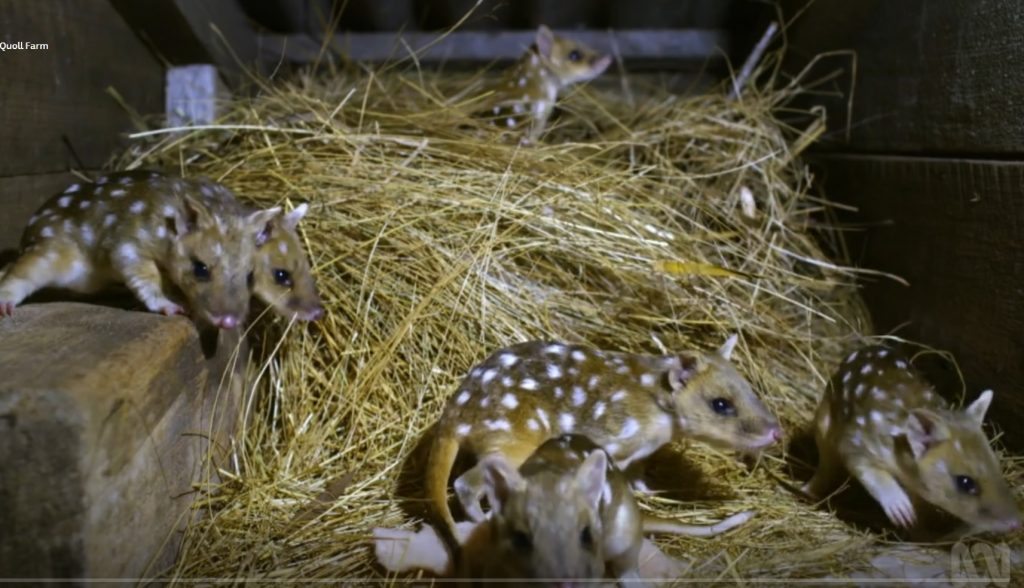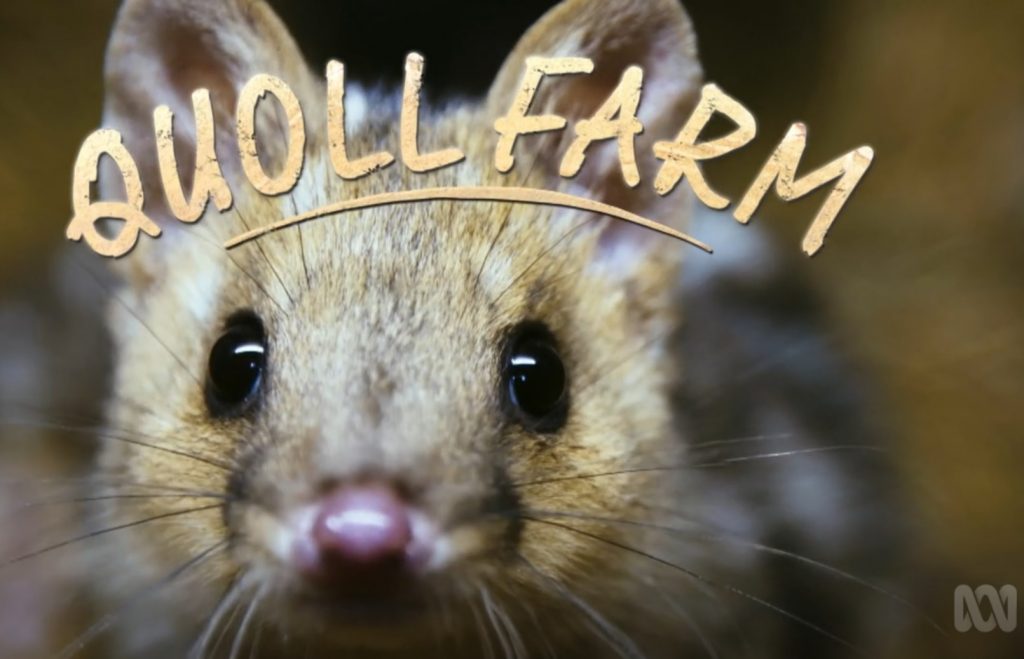Mainland Forgotten Fauna Part 13: An amazing insight into the secret life of the Eastern Quoll
We’ve been exploring the issue of forgotten fauna on the Australian mainland for some time, and thanks to a recent documentary on the ABC, we can now get an incredibly intimate understanding of what life is like for one of these long-forgotten, now extinct mainland species – the Eastern Quoll (commonly referred to in earlier times as the ‘native cat’).
It is hard to believe today, but the Eastern Quoll was so abundant in the 1800s in south-eastern mainland Australia prior to the introduction and spread of the European Red Fox in the 1880s and 1890s, that it was one of the most commonly encountered native species on farms and in towns. This documentary also gives an insight into how and why that was the case, given their attraction to the nooks and crannies of human habitation (especially the timber structures of those days) – which mimics their natural preferred habitat requirements in much the same way as the stone walls of western Victoria also used to.
As you will read in the examples below, the old newspapers and journals on the mainland are littered with accounts that I think are brought to life and given new context by watching this documentary.
For a perfect example that could describe the very scenes that play out in this documentary, the Hamilton Spectator newspaper in western Victoria had the following story back in January 1870:
“As the settlement of any locality progresses and the timber gets cleared off, the wild
animals are usually driven further afield. It is not so, however, in the case of Hamilton,
for the native cats seem to have effected a lodgment in the town, where
they breed in the same way as the domestic rat. In wooden houses especially,
the native cats, are particularly troublesome, locating themselves beneath the
flooring or behind the wainscotting, and scampering about between the roofs and
ceilings. The vermin are very destructive to hen-roosts, and in some parts of
the town it is impossible to keep fowls, owing to the depredations of the native cats.”

This is also consistent with an account of the Reverend Julian Tenison-Woods in his book of 1861, where he said of the Eastern Quoll, or native cat, that it:
“…is a very common frequenter of houses in Australia, being as destructive and vicious as the rat at home,
whose place in domestic economy it usurps in this colony. In its wild state it lives under rocks and
stones, in fact, in any underground cavity, but it does not burrow.”
Ultimately sentiment towards eastern quolls started to slowly shift in a more positive direction by the 1880s, as they were seen to be one of the only lines of natural defence against the rampant advance of European Rabbits, which by then were already causing havoc for farmers.
An account of the tension which emerged in that fateful phase, just before the arrival of the fox and the rapid elimination of quolls, appears in the Hamilton Spectator in 1885:
The proclamation made by the Government, that the native cat must not be killed, as it is a
destroyer of such vermin as rabbits, etc., does not meet with the approval of all householders.
Some on getting up in the morning, find the hen roost has been visited during the night by
some unwelcome intruder, – and seeing they are minus a pullet or two – mutter strange things
against the Government, in not being ‘allowed to destroy native cats, which they consider a
pest. But I suppose we must take notice of “the powers that be.”
To show just how rapid the loss of quolls was from Hamilton, after the arrival of foxes in the 1890s, consider that by 1912 a single sighting was noteworthy – with many locals not having seen them for “many years”. The article from the Hamilton Spectator in October 1912, is somewhat unfortunately (with the benefit of hindsight) entitled – Native Cat Pest:
It is a popular belief that the native cat has ceased to exist in this
district, many experts stating that none have been seen in the locality
for many years. This belief was to some extent shattered on Friday
night by the experience of Mr. Ord, who, bearing a disturbance
in his poultry yard, visited the scene, and there found a native cat
with a dying chicken in his mouth. He succeeded in killing the cat,
which was of the black and white spotted variety.
Isn’t is ironic – based on the way the sighting was reported – that the person who wrote this article didn’t seem to believe or recognise themselves that an extinction event was underway? Clearly when you have known a species to be common your whole life, their subsequent rapid disappearance is hard to fathom.
As we discussed in Part 12 of this series, there are a great many lessons to be learned from Tasmania, in terms of why the trajectory for small mammals in the natural experiment playing out over the past 130 years on this Australian island has been so different to the nearby mainland (whose original native fauna was almost identical).
Thankfully, at least for now, it is not too late to do something about it because none of those missing species are yet extinct in Tasmania. However, given the pressures now being exerted on small native mammals in Tasmania, with the loss of Devil populations and parallel increases in the impact of feral cats, this opportunity may not always be available to us.
Quoll Farm is currently available to watch on ABC iView, by following this link, or clicking on the image below:

